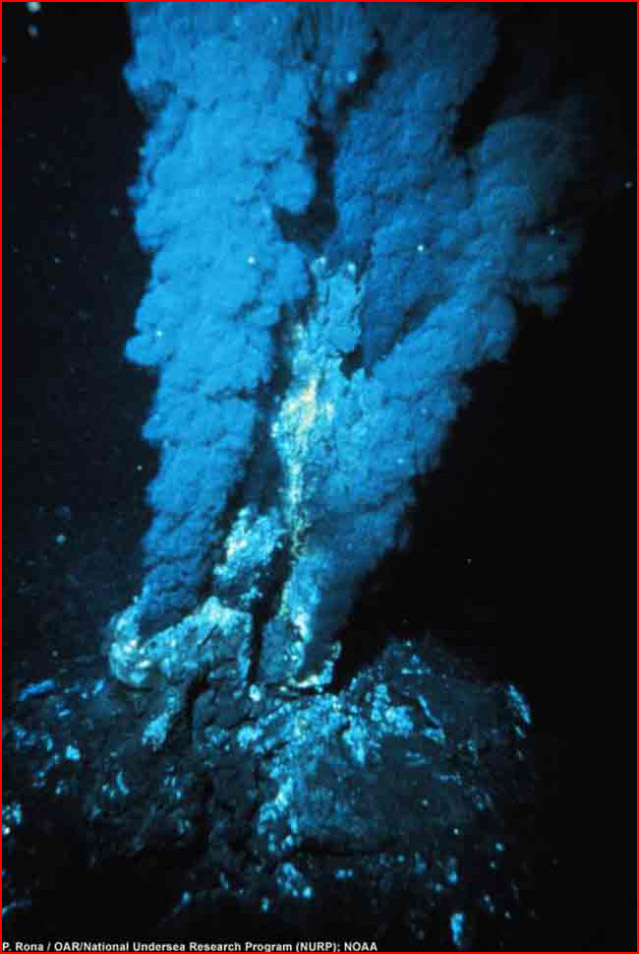|
|
||
 Credit: P. Rona (OAR/NURP/NOAA) |
||
|
pic of the day Links:
Society for
|
Nov 11, 2004 Scientists have long wondered where the simple organic molecules (peptide chains) that could have formed the first life on Earth originated. According to accepted theory, these ingredients were rare in the environment of the Earth billions of years ago. But recent experiments have shown how peptide chains can build up from carbonyl sulfide (COS) in water. Carbonyl sulfide is common in the gases spewed out from volcanoes. The best location for such a natural event seems to be around the smoking underwater volcanic vents on the mid-oceanic ridges. Here volcanic elements are thickly deposited in warm water on the ocean floor. (See photo above) A rival theory, based on the fact that organic molecules have been observed in comet tails, suggests that the first organic molecules may have been delivered to Earth from space by passing comets. From an Electric Universe point of view, these two theories are not The volcano-life experiments offers more support for the Electric Universe point of view. These experiments show that when carbonyl sulfide is added to water, about seven percent of the molecules form into chains. But when metallic ions are added to the mixture, the percentage of molecules forming into chains increases to as high as eighty percent. Of course, the presence of ions means the solution is a plasma and subject to the influence of external electrical fields. From a mainstream point of view, volcanoes are explosive events, the result of mechanical forces of heat and pressure. But the Electric Universe recognizes that plasma is also an important component of volcanic eruptions. Similar processes will occur in black smokers on the Earth's sea floor, in moons electrically coupled to gas giants such as Io and Jupiter, and in comets. So the plasma interactions that make up ninety-nine percent of the astronomical universe is also an integral part of the biological universe. Another new field of research, plasma biology, will open up to adventurous pioneers of the 21st century. |
|
|
Copyright 2004: thunderbolts.info |
||
